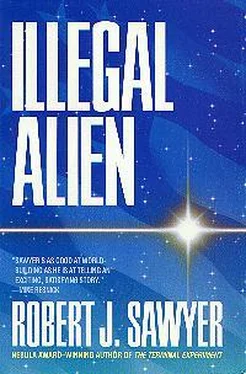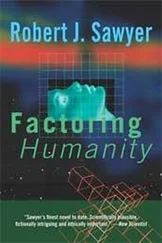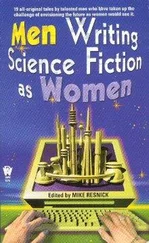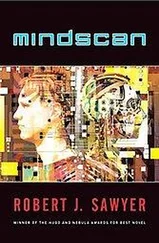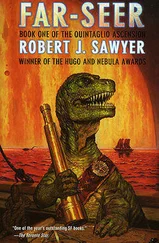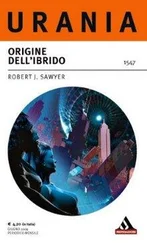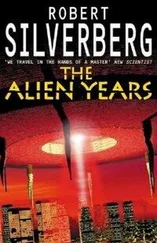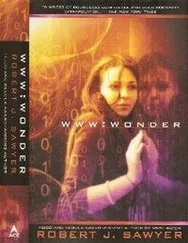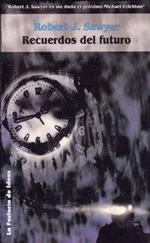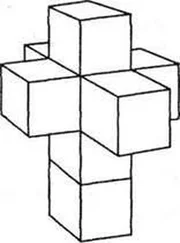“Now, Dr. Nobilio found in the Tosok sickbay four Tosok hearts, four Tosok lungs, and four Tosok gebardas —but none of the organs of which Tosoks have only one apiece. And, I have no doubt, ladies and gentlemen, that if genetic tests were performed on the right hearts and right lungs found there, they would indeed be proven to be those of Seltar. But I submit to you that the left lungs and left hearts are not Seltar’s, but Hask’s own.
“The truth of the matter, ladies and gentlemen of the jury, is that Seltar did not die during the Kuiper-belt accident, but, in collusion with Hask, her death was faked. He removed two of her hearts, two of her lungs, and two of her gebardas , and she removed two each of his. Then she and he stayed out of hibernation, letting replacements grow within them. A cursory check would have shown roughly enough body parts to corroborate Hask’s story that Seltar was dead, but in fact she is not. She hid aboard the Tosok mothership, and while Hask came to Earth with great fanfare, streaking across the skies of the world and ostentatiously splashing down in the Atlantic, Seltar made a more stealthful landing somewhere else, using the landing craft that Hask told us and his ship-mates had been lost during the collision. It is she who killed Cletus Robert Calhoun, and, for reasons of his own, Hask has chosen to cover for her.
“I urge you, ladies and gentlemen of the jury, to find the only just verdict possible: acquit Hask of this crime that he most assuredly did not commit, and let us now begin a search for the real murderer—wherever she may be.”
Dale heaved his massive bulk back into a chair in Hask’s dorm room.
“Well?” he said.
“God,” said Frank, again. “God. Hask, is it true?”
Hask’s tuft was moving in ways Dale had never seen before.
“Hask,” said Frank again, “is it true? Is Seltar still alive?”
“There are issues here,” said Hask slowly, “of which neither of you are aware. Do not mention your speculation anywhere else, Dale.”
“This is the trial of the century,” said Dale. “I’m not going to lose it.”
Hask’s tuft swayed in negation. “It is the trial of the millennium,” he said. “It is the trial of all time—and it is not being played out in the tiny confines of Judge Pringle’s courtroom. I beseech you, Dale, do not pursue this.”
“Why, Hask? I need a reason.”
Hask was silent for a time, then: “Frank, you are a powerful person on this world, no?”
“It would be more correct to say I work for a powerful person,” said Frank.
“Regardless of the subtleties, you have access to extraordinary resources. If I asked you to take me somewhere, you could arrange the trip in such a way as to attract no public attention, yes?”
“Are you asking for asylum?” asked Frank.
“No. But if I am to answer Dale’s question, it cannot be done here. We must go somewhere else.”
“Where?”
“Northern Canada.”
“Why?”
“Arrange the passage. I will take you and Dale there, and then, I promise, we shall return to Los Angeles, and I will face justice.”
Dale sent Michiko Katayama to court the next day, to beg off, saying that Hask had suffered a relapse from his gunshot injury. Frank arranged for Hask to be smuggled out of the USC residence in a laundry container, which was driven to March Air Force Base, nine miles southeast of Riverside. From there, a U.S. military jet flew Frank, Dale, and Hask to a Canadian Forces Base in Cold Lake, Alberta. They transferred to a Canadian plane, which took them into the Northwest Territories.
Frank didn’t particularly like to fly, especially in small planes. He kept his equilibrium by thinking about his daughter, Maria, conjuring up her beautiful, wide-eyed, twelve-year-old face. So much had happened—and, it seemed, so much more was still going to happen. All his life, he’d been trying to make the world a better place, but never for himself. It had always been for her, for the children, for the future. What effect would the outcome of this trial have on humanity’s relations with the Tosoks? What kind of world would be left for Maria once the verdict was handed down? He shivered in the plane’s small cabin, and not just from the cold.
The Canadian pilot almost missed the ship. Hask’s lander had amply demonstrated its ability to change color by cycling through red, orange, yellow, green, blue, indigo, and violet while bobbing on the Atlantic. This lander, too, had changed color, to precisely match the lichen-covered rocks of the tundra. But once Hask had pointed it out, its shield shape was obvious. The plane had pontoons; the Canadian pilot put it down in a lake about a quarter mile from the alien craft. Finding a parka big enough to accommodate Dale had been a challenge, but they’d managed it. Hask was actually wearing a Tosok space suit, brought from one of the Tosok landing craft at USC. It was pale green in color and hugged his form snugly—but, he said, provided more than enough insulation to keep out the subzero cold.
They made their way ashore in an inflatable rubber boat and walked the short distance across the barren landscape to the lander, their breath escaping in clouds of condensation. A radio in his space suit allowed Hask to communicate with the lander’s occupant; when they arrived, the outer airlock door opened for them.
They cycled through the air lock—and there she was.
Seltar.
Her hide was purplish gray, and her eyes were pink and orange and ebony and navy blue. She was slightly shorter and slightly broader than Hask.
Hask touched controls on his space suit and it fell away, like a shed skin.
He rushed to Seltar. His front arm came up, as did hers, and they intertwined their eight fingers. Meanwhile his back hand came up and reached over his head to touch Seltar’s tuft; Seltar, meanwhile reached over with her back hand to stroke Hask’s tuft.
“God, it has been so long—” said Hask. He realized his translator was still on, and disengaged his front hand from Seltar’s long enough to deactivate it. They continued to embrace, and to chatter to each other for several minutes. Frank looked at Dale, slightly embarrassed.
At last the embrace ended, and Hask turned to look at the two humans. He was still holding front hands with Seltar, but he reactivated his translator with his back hand.
“Forgive us,” said Hask. “Did I mention that Seltar is my mate?”
Frank grinned. “No, you didn’t.”
“Well, she is. In fact, she is my four-mate—we have agreed, when the time comes, that I shall impregnate all four of her wombs.”
“You kinky devil,” said Dale, with a smile.
When Hask had spoken all those months ago of the female Tosok God, Frank thought he’d heard Hask call her the “foremother” of the race, a feminine version of “forefather.” He realized now that what Hask had probably really said, though, was “four-mother.”
“Please,” said Hask, “let me make proper introductions. Seltar, this is Dale Rice, a human attorney. And this is Frank Nobilio, a human scientist and government official. They are good people, and they are my friends.”
“How do you do, Seltar?” said Frank.
Her translated voice was identical to Hask’s—presumably Hask had simply copied the translation program from his portable computer to hers. “I do very well, thank you,” she said.
“You’ve been here all this time?” asked Dale.
“Yes,” she said.
“But why here? Isn’t it too cold for you?”
“My space suit provides adequate protection when I feel the urge to get outside of this lander,” said Seltar, “but when I do go outside, the light is agreeably dim. The sun does not get far above the horizon this far north.”
Читать дальше
